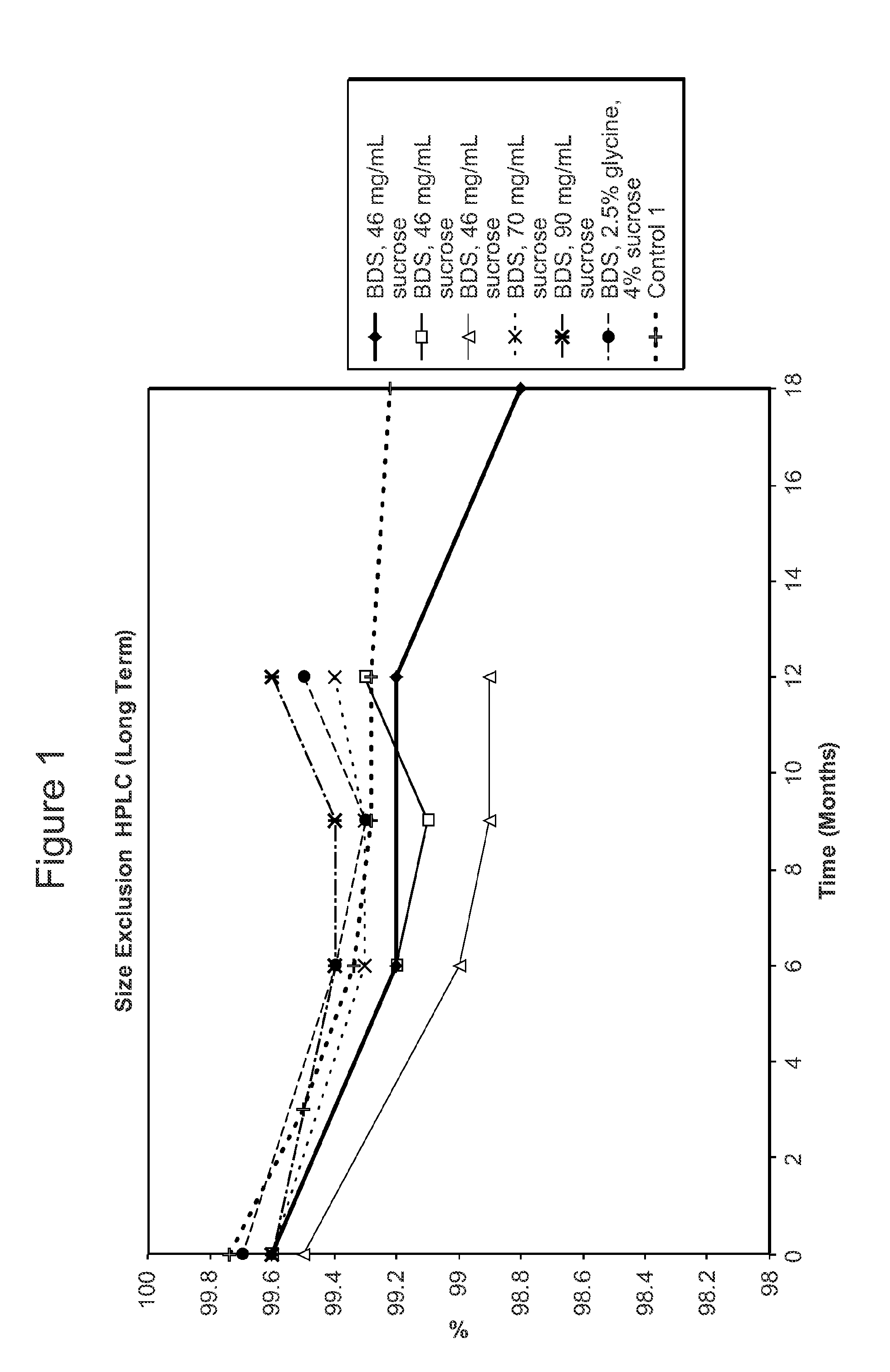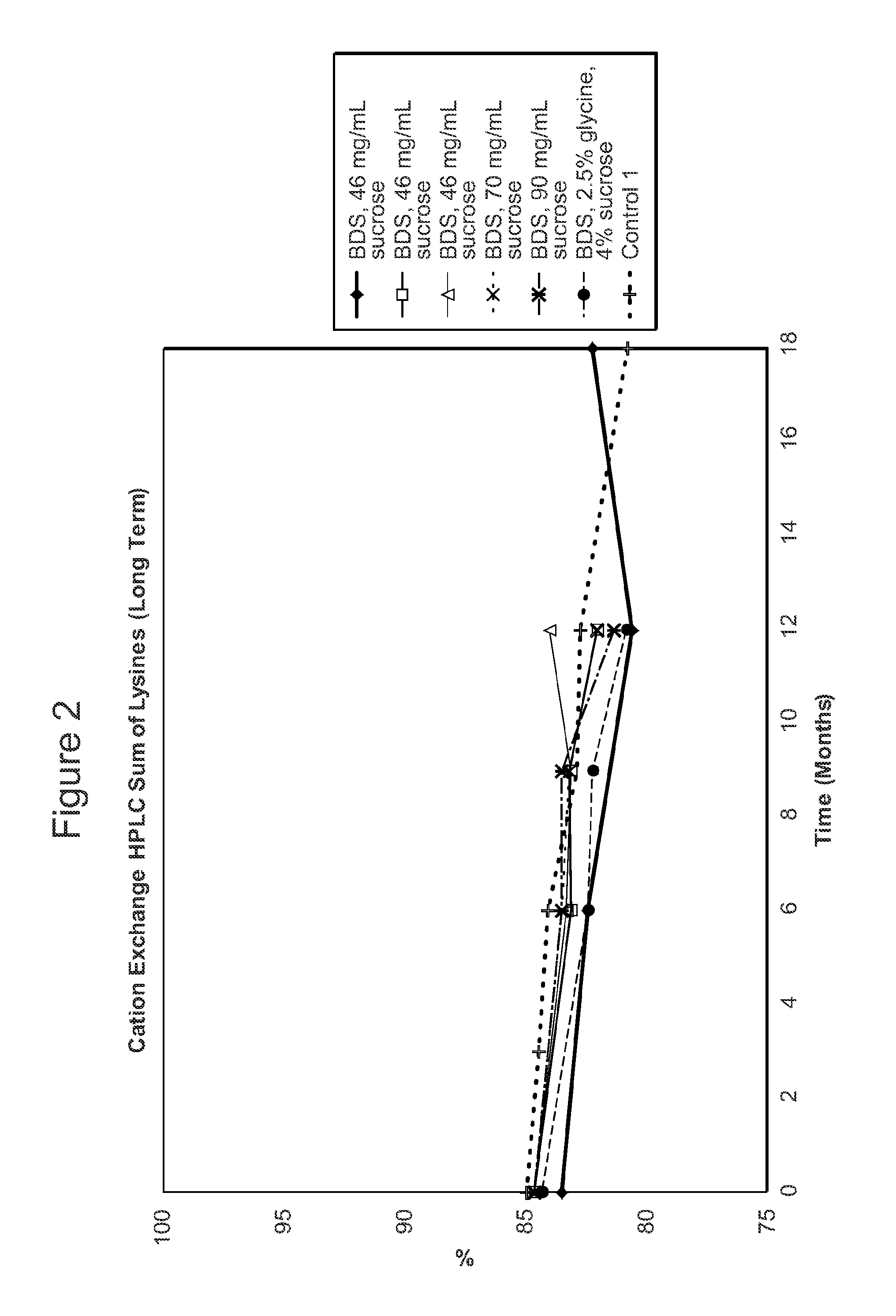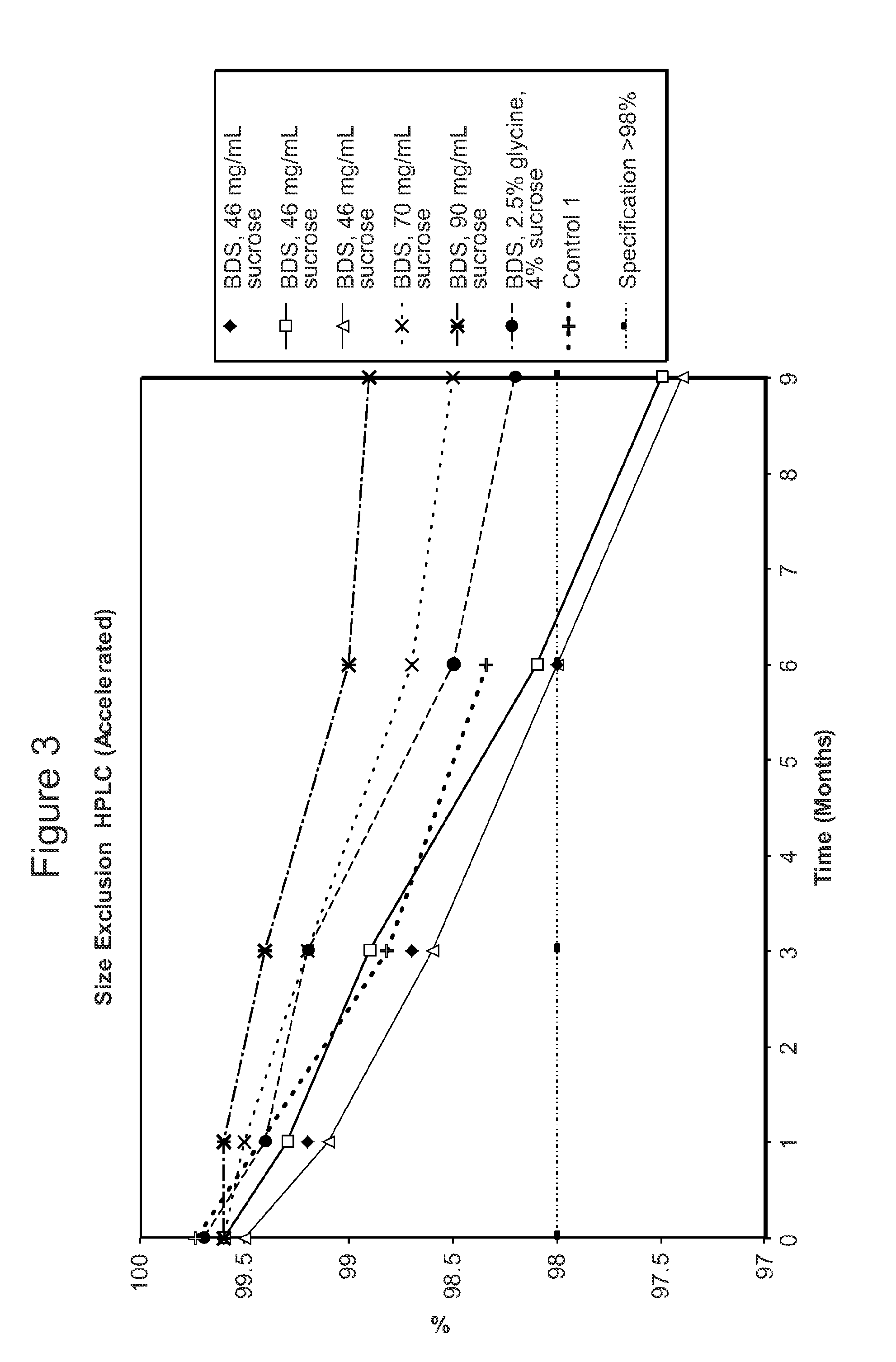Stable solid units and methods of making the same
a solid unit and solid unit technology, applied in the pharmaceutical industry, can solve the problems of inability to stably maintain, manufacturing difficulties, and added complexity for patients, and achieve the effect of improving stability and stability
- Summary
- Abstract
- Description
- Claims
- Application Information
AI Technical Summary
Benefits of technology
Problems solved by technology
Method used
Image
Examples
example 1
Uniform Free-Flowing Solid Unit Manufacturing Process for Holistic BioPharmaceutical Platform System
[0531]The production of uniform, free flowing solid units of the holistic platform system described herein may be produced generally by controlled nucleation freezing of a liquid solution followed by lyophilization and resulting in a uniform geometrically shaped solid unit. For example, solid units of the invention may be produced generally by freezing a solution comprising a therapeutic agent followed by lyophilization. The general process is described in detail below.
[0532]The initial step in the production of solid units comprising a therapeutic agent, such as a therapeutic protein, e.g., an antibody, was the freezing of a solution comprising the agent. The frozen solid unit (a sphere) was produced by releasing a droplet of the solution (e.g., a 20 μL droplet) into liquid nitrogen using a Cole Parmer syringe pump and a BioRad fraction collector. The droplet froze in the liquid nitr...
example 2
Preparation of Adalimumab Solid Units
[0534]The following example describes the preparation of solid units comprising antibodies, exemplified by adalimumab. Solution 1 referenced below in Table 1 is a solution containing the following: 50-80 mg / ml adalimumab, mannitol (approximately 12 mg / ml), polysorbate 80 (approximately 1 mg / ml), sodium chloride, (approximately 6.15 mg / ml), and a phosphate / citrate buffer (sodium phosphate monobasic (approximately 0.86 mg / ml); sodium phosphate dibasic (approximately 1.53 mg / ml); sodium citrate (0.3 mg / ml); and citric acid monohydrate (approximately 1.3 mg / ml). Solution 2 is a solution containing 60-130 mg / ml adalimumab in water.
[0535]Specifically, the following adalimumab concentrations were used in solution 2 for the following studies: Study 31: 80 mg / ml adalimumab; Study 32: 100 mg / ml adalimumab; Study 33: 115 mg / ml adalimumab; Study 34: 130 mg / ml adalimumab; Study 34: 130 mg / ml adalimumab; and Study 47: 60 mg / ml adalimumab. Unless otherwise spec...
example 3
Stability Analysis of Adalimumab Solid Units
[0611]The stability of the antibody adalimumab within the solid units and cakes prepared according to the methods described in Example 2 was assessed by cation exchange chromatography (CEX) and size exclusion chromatography (SEC) following specific storage conditions. The levels of aggregates, monomers, and fragments of adalimumab in the reconstituted solution was determined by SEC HPLC. The levels of acidic species and other charged variants of adalimumab in the reconstituted solution were quantified using a CEX HPLC method.
[0612]For SEC and CEX testing, approximately 100 solid units comprising adalimumab prepared as described above in Table 2 per study were reconstituted with 100 ml of water as the diluent. One cake comprising adalimumab as described above per study was also reconstituted with water as the diluent.
[0613]For the SEC HPLC testing, a Superose 6 HR 10 / 30 column, 10×300 mm highly cross-linked agarose, 11-15 μm particle size (...
PUM
| Property | Measurement | Unit |
|---|---|---|
| diameter | aaaaa | aaaaa |
| concentration | aaaaa | aaaaa |
| diameter | aaaaa | aaaaa |
Abstract
Description
Claims
Application Information
 Login to View More
Login to View More - R&D
- Intellectual Property
- Life Sciences
- Materials
- Tech Scout
- Unparalleled Data Quality
- Higher Quality Content
- 60% Fewer Hallucinations
Browse by: Latest US Patents, China's latest patents, Technical Efficacy Thesaurus, Application Domain, Technology Topic, Popular Technical Reports.
© 2025 PatSnap. All rights reserved.Legal|Privacy policy|Modern Slavery Act Transparency Statement|Sitemap|About US| Contact US: help@patsnap.com



